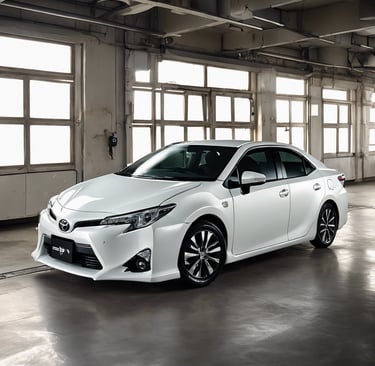The Rise of Modified Secondhand Vehicles in Southeast Asia
icarway
10/26/20242 min read
Introduction to Modified Secondhand Vehicles
In recent years, the automotive landscape in Southeast Asia has seen a remarkable transformation, particularly with the increasing popularity of modified secondhand vehicles. These vehicles have become a desired choice for many consumers due to their affordability and unique customization potential. As we delve deeper into this phenomenon, it becomes essential to understand the factors contributing to the surge in popularity of these modified cars.
Factors Driving Popularity
One significant factor contributing to the rise of modified secondhand vehicles in Southeast Asia is the economic consideration. With the rising costs of new vehicles, many individuals opt for previously-owned cars that can be tailored to their personal preferences at a fraction of the price. These modifications range from aesthetic enhancements to performance upgrades, allowing owners to express their individuality.
Moreover, the influx of social media platforms has fueled this trend. Enthusiasts share pictures and videos of their modified vehicles online, creating a sense of community and motivating others to follow suit. This visibility contributes to the overall allure and acceptance of modified secondhand cars as a viable option.
The Environmental Perspective
The trend of modifying secondhand vehicles also aligns with growing environmental consciousness among Southeast Asian consumers. By opting for a secondhand vehicle, individuals contribute to reducing waste and promoting sustainability. Modifications, when performed thoughtfully, can enhance fuel efficiency and reduce emissions, making them an environmentally responsible choice. The intersection of sustainability and customization is paving the way for a new automotive culture in the region.
As Southeast Asia continues to embrace modified secondhand vehicles, it is essential to establish regulations that ensure safety and emissions compliance. While customization offers the freedom to innovate, maintaining responsible standards is crucial to safeguarding the interests of both drivers and the environment.
Conclusion
In conclusion, the burgeoning popularity of modified secondhand vehicles in Southeast Asia reflects a broader societal shift towards personalized consumerism and environmental awareness. With economic factors, social media influence, and sustainability at the forefront of this trend, it is likely that modified secondhand vehicles will continue to gain traction in the region. As this market expands, stakeholders must work together to ensure that modifications adhere to safety and environmental regulations, ensuring a sustainable future for the automotive industry in Southeast Asia.


